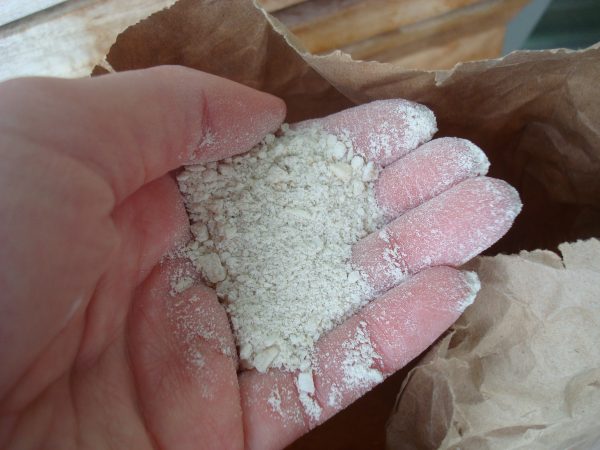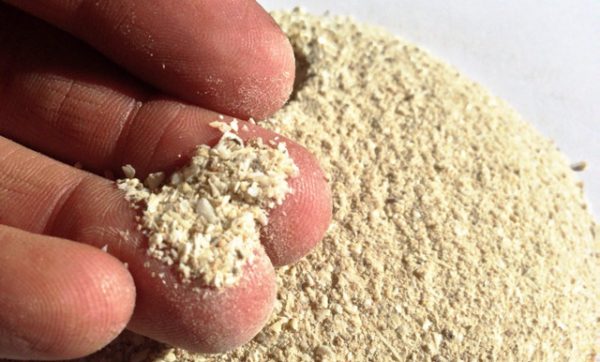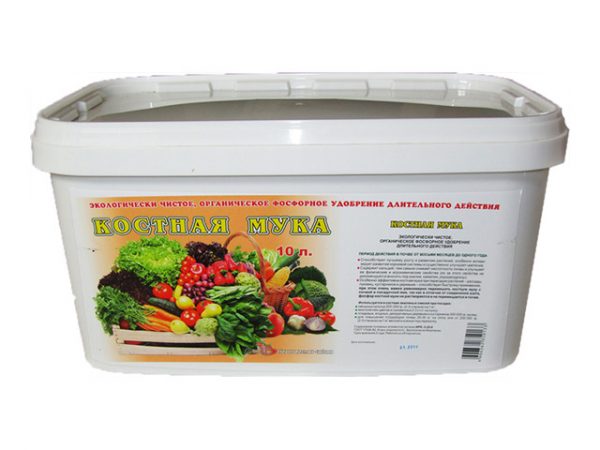Bone meal as fertilizer: how to apply and what types exist
Content
Description
Organic fertilizers have long proven themselves in practice as an excellent plant nutrition. Bone meal is one of the most popular types of such feeding. It is a product of animal origin, it is inexpensive, but has rather high efficiency rates and brings many benefits to the garden and vegetable garden. Bone meal as a fertilizer is widely used by the countries of Europe and the CIS, it is an absolutely natural additive, does not damage the soil.
Such a substrate is obtained by grinding the bones of cattle, in fact, it is a by-product of the processing of animal carcasses. The substance formed after grinding is in the form of a powder with a yellowish tinge. Its composition is very rich in various minerals and trace elements: sodium, iron, iodine, manganese, zinc and copper, magnesium and cobalt - these are just a part of this valuable list. Of course, phosphorus and nitrogen are the main elements of the yellow powder that make it suitable for use in the agricultural industry. Thanks to this combination, the bone substrate is also called phosphoazotin. Experts recommend using phosphoazotine as a natural mineral plant feed, which has 10 main advantages:
- high humidity (due to the content of animal fat);
- naturalness, rich composition;
- applicable for all types of crops - garden, vegetable garden, even home flowerpots;
- the period of complete decomposition is from six months to 8 months, after which the powder completely merges with the composition of the soil;
- does not oversaturate the soil with nitrates, pesticides;
- feeding with phosphoazotine brings good yields, which has been proven by world experience;
- cheap, does not take up much storage space, can be purchased and added to the soil in small doses (grams or spoons);
- you can use phosphoazotine immediately dry, which cannot be said about compost or manure;
- one application is enough to feed the plants for the whole season;
- phosphorus enters the root system of the plant gradually, in a balanced way.
Video "How to Make Your Own Bone Meal"
Video instruction.
How to use bone meal
Bone oily meat is versatile, but there are some things you should pay attention to. For example, the composition of the soil. As the main plant food, phosphoazotine is added to acidic soil. The main element phosphorus dissolves well in an acidic medium, poorly in ordinary water. Therefore, the high acidity of the soil is of great importance: it allows you to use the potential of the substance to one hundred percent.
The most popular calculation formula is as follows: 100-200 grams of bone substance feeds 1 square meter of soil. For fruit trees, it is better to use a dose of 200 g, feeding every three years - this helps to restore the root system if necessary.For berries, the dosage will differ, depending on the season: in the spring add 70 g to the hole when transplanting, in the fall - 90-100 g. Phosphoazotin is very beneficial for bulbous plants.
Fish bone meal, the grinding of fish skeleton, contains more phosphorus than regular fish meal. It will be preferred by plants for which this element is extremely important. Among them are potatoes - 100 g of fish oatmeal per square meter is enough, as well as tomatoes - a tablespoon of substrate under each bush will bring a wonderful harvest of tomatoes. For indoor plants, you can use phosphoazotine in a ratio of 1: 100 (1 part powder plus 100 parts soil) - this cocktail will give home flowers an excellent appearance. Do not use it on azaleas or rhododendrons.
It is very convenient to bring bone oat into the ground when digging up beds or direct planting. Usually, this is done in the fall or spring. The substrate is valid for at least 6 months. For the most effective impregnation of the soil, it is sprinkled with powder (the calculation is still the same - 100-200 g per square of earth), and then dug up. For feeding vegetables, bulbous plants, fertilizer is poured directly into the hole or groove before planting the crop. So, it is mixed with the ground.
If the soil is light, dry powder can be used. For heavy soils, you can mix it with compost or make a liquid fertilizer: 1 kg of powder per 20 liters of hot water is mixed, then kept for 10 days. After aging, such a make-up can be diluted with water, and then added to the ground along with other useful additives.
Fertilizers
Bone meal has several varieties, which differ in the method of obtaining and the content of phosphorus:
- powder with a content of 15%;
- steamed contains 25% of the main substance;
- fat-free with a content of 35%.
The additive that is obtained by grinding the fish skeleton is called fish bone meal. This form of feeding is widely applicable on the coast, where fisheries are developed - Argentina, the USA, the Mediterranean region. Fish oat consists not only of ground fish bones, but also of the tissues of fish carcasses. This extract contains about 4% phosphorus, and nitrogen - as much as 10%. For a greater effect, it is mixed with fish bone fertilizer or used as a nitrogen supplement. Flour can be obtained from horns, hooves, crab shells, even bird feathers. Such a supplement will be rich in iron and calcium. In the CIS countries, this type is not popular.
Bone meal has long established itself as a quality fertilizer. Meat and bone, fish or any other it has a low cost, shows good results of use. Because of this, this type of organic feed is an important part of the agricultural industry. It is used for garden plots, vegetable gardens, even indoor flowers. A small amount of oatmeal is more than enough for a whole season, while the yields are juicy, rich in nutrients and shining with health.
Video "Chopping bones with a machine"
How bones are chopped using a special device.




